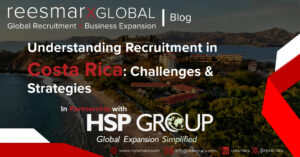Many studies of leading organizations support the fact that a business team built on a principal of balanced diversity (gender, ethnicity and culture) offers competitive advantages. With the focus on salary parity, and the under representation of minorities in supervisory and management roles (suggested article “Why diversity matters” by McKinsey & Company), corporate diversity remains an ongoing challenge for all organizations, from small businesses to large multinationals.
Businesses can inadvertently and without conscious malice, evolve to a predominantly homogenously staffed environment. In fact, many business leaders know it is a problem, but they aren’t quite sure how or when the problem started. In very few cases is the lack of diversity a deliberate plan but changing your workforce and gaining the benefit of a more diversely balanced team, takes a strategic effort and awareness.
1. Block Out Names During CV Review
This is becoming a new practice in many first-round candidate reviews, and it is one we support as a positive step to holistically viewing qualifications without inadvertent bias. Whether we choose to admit it or not, names that are long or difficult to pronounce, can lead to an inadvertent bias, when being screened as a potential hire.
By removing the first name and surname of the candidate, the focus for the reviewer is honed more on their credentials, education and experience. If the candidate proceeds to the second round of review and discussion (prior to scheduling an in-person interview), the business can then choose to review the name of the individual, as part of background check.
2. Ask for Recommendations from Current Employees
Whether you are hiring independently or using the services of a professional recruitment agency, employee recommendations and referrals should not be ignored as a potential source of talented career professionals. What this also does, is allow all employees from different cultural backgrounds to be part of your recruitment and hiring process.
Employees are an excellent resource. If they are close the individual (family or friend), or if they have worked successfully in the past with the candidate, they are aware of the culture of the business environment, and whether that candidate will thrive as a member of the team. Conversely, a high-performing employee shares the positive attributes of the employer socially, which can help assure candidates that they are joining a business with a healthy corporate culture.
3. Demonstrate Corporate Diversity to Recruit New Employees
The organizations that have the most effectively implemented corporate diversity strategies, are transparent about their mission. There are two transparent methods of demonstrating a positive and culturally diverse work environment:
- Include a variety of ethnicities in both internal and external marketing and communication graphics. Be inclusive in terms of gender and ethnicity when designing print or web advertising or branded content (i.e., social media).
- Use a diverse recruitment team or panel of interviewers, if hiring in-house. This helps demonstrate that every applicant is welcomed based on talent and expertise, and that they will not be limited or ‘disqualified’ if they are a visible minority.
Bias is a factor that limits talent recruitment, for any organization. To stay competitive in today’s fast-moving business environments, businesses that value diversity can communicate from a variety of cultural perspectives, broadening their appeal to more consumers, or business to business customers.
4. Create an Employee Resource Group (ERG)
Every leading national and multinational organization has a core ERG group. How does it work? It can be as simple as offering an internal intranet system, to allow staff to share and communicate. It can also be a valuable tool to tap into employee innovation, by opening the dialogue to allow employees to both identify issues and propose solutions.
All ERG groups can use the tool to foster inclusion, while consistently punctuating the core mission, values and goals of the organization. It can help onboard new hires quickly, by indoctrinating them into the employee and management community, and it provides a vehicle for private or public feedback, and support from the human resource team.
How exactly do diverse hiring models impact productivity and innovation for businesses? We found some valuable insights in this article we’d like to share: “Want A More Innovative Company? Simple: Hire A More Diverse Workforce” on Fast Company.
Talk to our team at reesmarx, to help you create a strategic diversity hiring plan.






